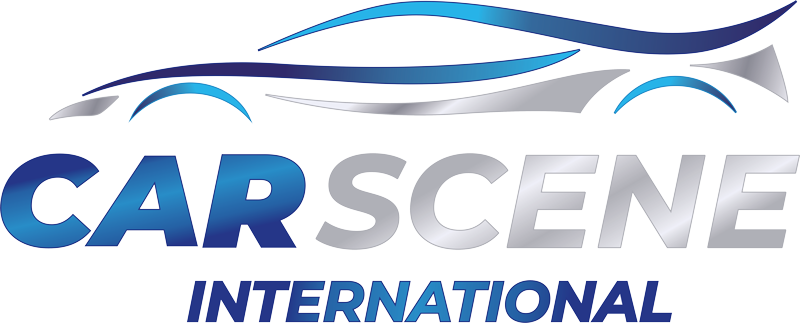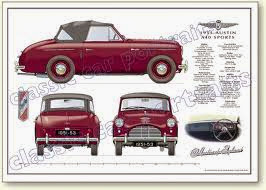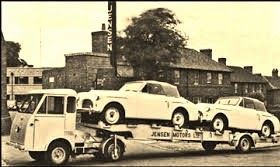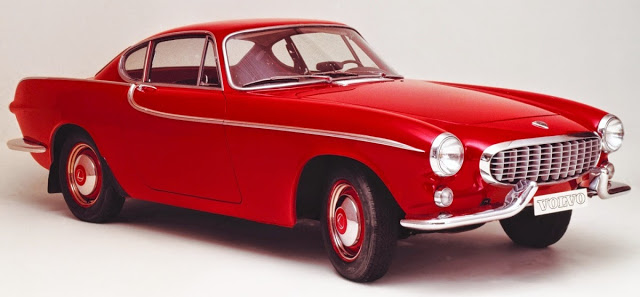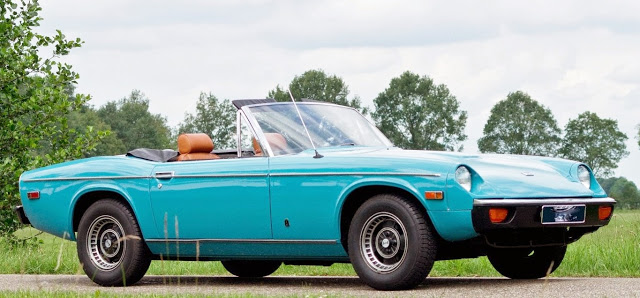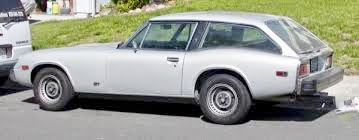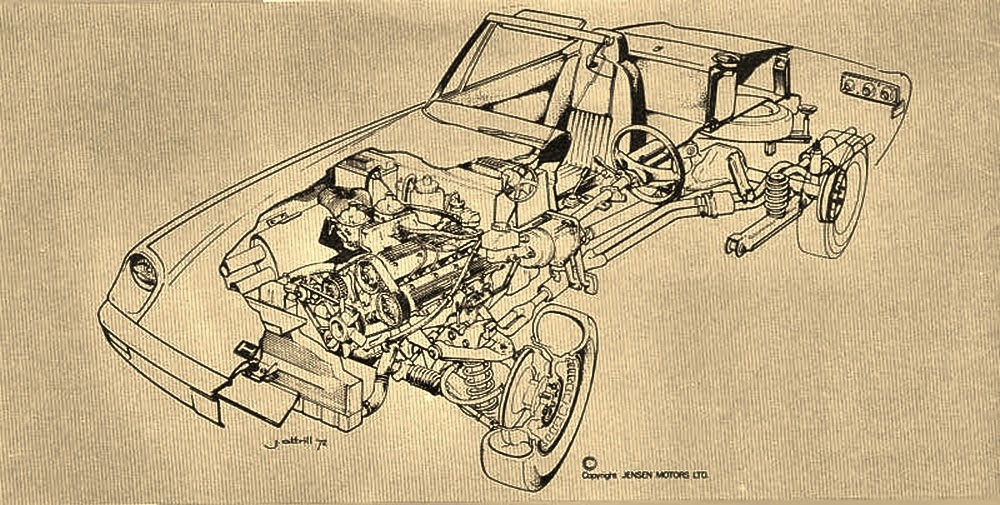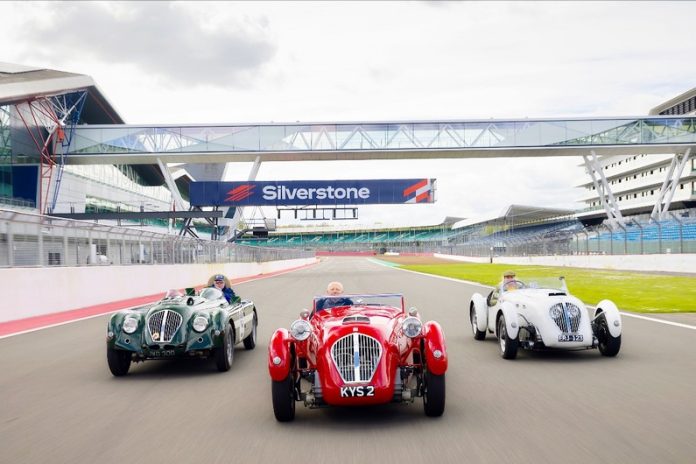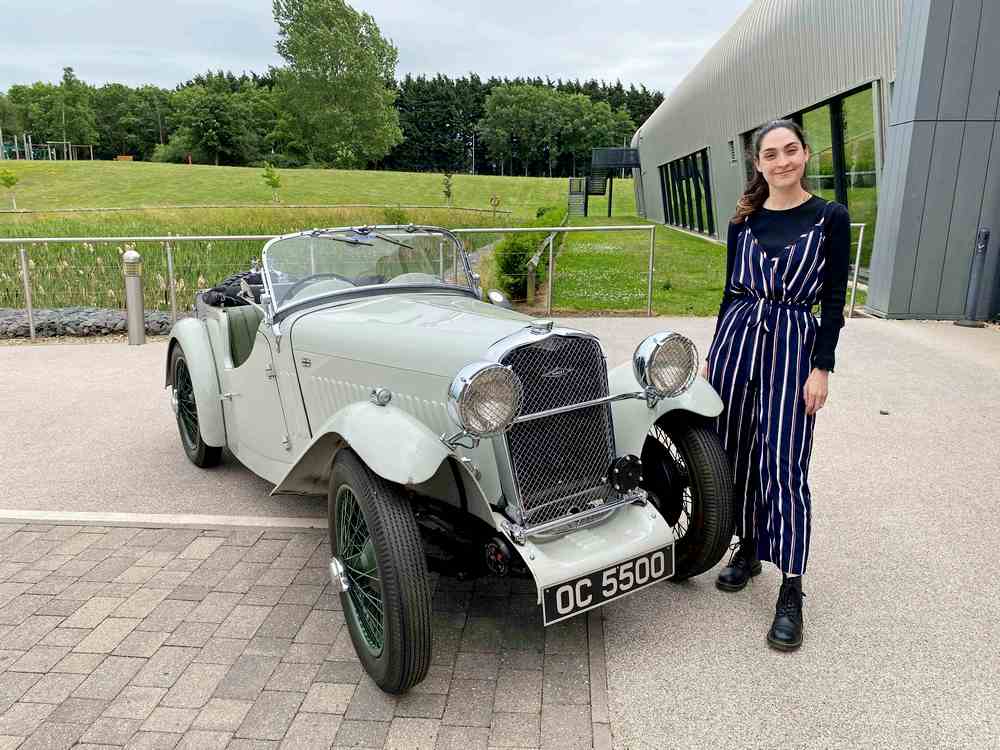Before I get into the detail of the Jensen Motors Contracts I feel that I should provide a brief history of the company –
The development of the Jensen brother’s business (Jensen Motors Limited) can be summarised thus: –
1928 – 1931 – Designing and building special bodies using a variety of proprietary chassis/engines and running gear. Initially this was done on their own account then with Avon Coachworks, Warwick, followed by a stint with Patrick Motors, Birmingham which for a short time was called Patrick – Jensen. The cars built during this period were known by the name of the chassis provider, non were badged ‘Jensen’.
1931 – 1935 – Very similar activity to that of the first period but work was carried out on the premises of W.J. Smith & Sons, Carters Green, West Bromwich where Alan and Richard became managing directors. W.J. Smith was, mainly, a builder of commercial vehicle bodies but at the time of the brothers joining the company was in decline.
1935 – The first ‘Jensen’ badged car produced, a soft top built on a Ford (U.S.) Model 40 chassis with a ‘flat head’ V8 3.5 Ltr. engine. Also, continuing with the original W. J. Smith & Sons business of building bespoke commercial vehicle bodies.
1935 – 1940 – Regular production of small numbers of Jensen badged cars plus bespoke commercial vehicle bodies. The company’s name was changed to Jensen Motors in 1936.
1940 – 1945 – The Carters Green factory was mainly given over to a variety of military contracts for the British Government. As with so many similar British companies, this was quite a profitable period for Jensen. It put the company in a good position to start rebuilding its vehicle making business after the war.
1945 – 1949 – Three significant events took place in this period: One, Eric Neale joined the company as senior body designer. Two, the launch of the first Jensen car not to be designed by the brothers – the Interceptor designed by Eric Neale. Three, in 1948 Jensen received its first contract from the Austin Motor Company – to build the load-carrying section, in aluminium with wood reinforcing, of the A40 Pick-Up. Austin sold 61,818 Pick-Ups between 1948 and 1957. This was followed in 1949 by an even more significant contract – to build complete bodies, in aluminium, for the Austin A40 Sports model (a scaled-down version of the Jensen Interceptor). Around 4000 A40 Sports were built between 1950 and 1953.
1949 – 1966 – Probably the most important period of Jensen Motor Company’s existence. –
In 1952 the company was awarded the contract to build the Austin Healey 100 car.
Jensen assembled, painted and trimmed the complete car minus mechanical parts which were fitted at Austin’s Longbridge plant in the first couple of years then at the MG plant at Abingdon, Oxon.
In 1954 the revolutionary Jensen 541 with its aerodynamic fibreglass body designed by Eric Neale mounted on a twin-tube perimeter chassis designed by Colin Reikie.
In 1959 Jensen was taken over by Norcross a British Investment company.
In 1960 Jensen won a contract to assemble the Volvo P1800.
In 1964 Jensen won a contract to assemble Sunbeam Tigers. This replaced the Volvo P1800 contract which had been terminated because of poor quality body panels supplied by Pressed Steel Ltd.
In 1966 the new Italian designed Interceptor was launched. This took Jensen into a new sphere altogether, overall a very successful one. In the same year the FF (Ferguson Formula four wheel drive) model was introduced.
This year also saw the resignations of Eric Neale and Alan and Richard Jensen. An end of an era and as things panned out, the beginning of a slow decline for the company.
1966 – 1976 – A slow decline towards the end.
1967 – Production of Austin Healey 3000 came to an end. This contract had sustained Jensen since 1952 and its loss came as a great blow. It should not have been a surprise though because Healey sales had been declining and there was a new regime in charge at BMC.
The success of the Interceptor mitigated, to some extent, the financial impact of the loss of the A.H. contract. Numerous plans were in place to find a replacement for the Healey not least in the Healey Motor Company’s drawing office at The Cape, Warwick. This latter work would eventually lead to the launch of the Jensen – Healey in 1972.
The Interceptor continued to be developed with three series being introduced over this period.
The expensive to manufacture and maintain, FF model was withdrawn from production in 1971.
1968 Carl Duerr, the American ‘turn around’ specialist, was hired by Norcross in order to try to revive the ailing company. He is credited with having a positive impact on the company and the workforce. He refers to his time at Jensen in the last chapter of his highly regarded book ‘Management Kinetics‘.
1970 An American of Norwegian descent, by the name of Kjell Qvale, had been a major distributor of Austin Healeys in California. The demise of that model had hurt his organisation and he also knew that there was still a pent up demand for an archetypal British sports car in the States, particularly California. This caused him to have discussions with Healey and Jensen to see if, between them, they could design and build a car which would fill the gap left by the ‘Big Healey’.
The end result of these discussions was Qvale buying a controlling stake in Jensen Motors
and the development of the car that would be named Jensen – Healey.
1972 The Jensen – Healey two seater sports car had mostly Vauxhall running gear and for power used a recently introduced Lotus 907 (2.0 Ltr. DOHC) engine. This engine was underdeveloped when Jensen started fitting it into the new car. As a result the Jensen-Healey soon developed a bad reputation for unreliability, a disaster in any market but particularly in the U.S. market at which the car was primarily aimed. As a result, sales fell well short of predictions, this had a severe effect on the profitability of the company.
Sales of the Interceptor also began to decline and although there was a new model (F model) on the drawing boards there was insufficient time or money to bring it into production.
1976 In September 1975 the financial situation of the company was such that the lenders (banks and suppliers etc.) put it into receivership with the aim of either implementing procedures which would help the company to survive or to sell it as a going concern. Neither option proved possible and the company was closed in May 1976.
But the cars and the illustrious history of their creators live on. Entrepreneurs have been inspired to resurrect the brand and launch worthy successors to the Interceptor but so far without any sustainable success. Even if that does not happen the cars that exist are well loved and cared for, in the U.K., the U.S., Canada, Australia and throughout Europe. There are some very knowledgeable and committed Jensen Owner clubs in these countries with the doyen of them all being the JOC.org.uk
The Contracts
When I set out to create this post, my objective was, mainly, to cover the contracts that the company won to assemble cars for other manufacturers. These contracts provided the Jensen brothers with the money to build and develop the cars carrying their own name. Before I got there I felt the need to summarise the history of the company (above). Now we can look at the “contract” cars in detail –
A40 Austin Pickup
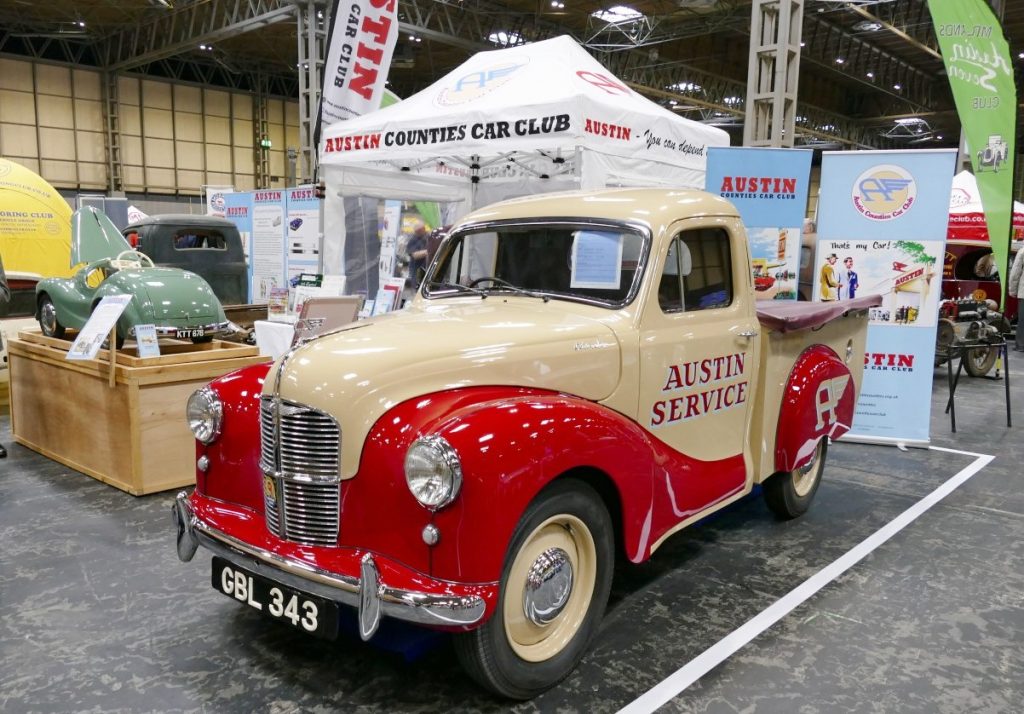
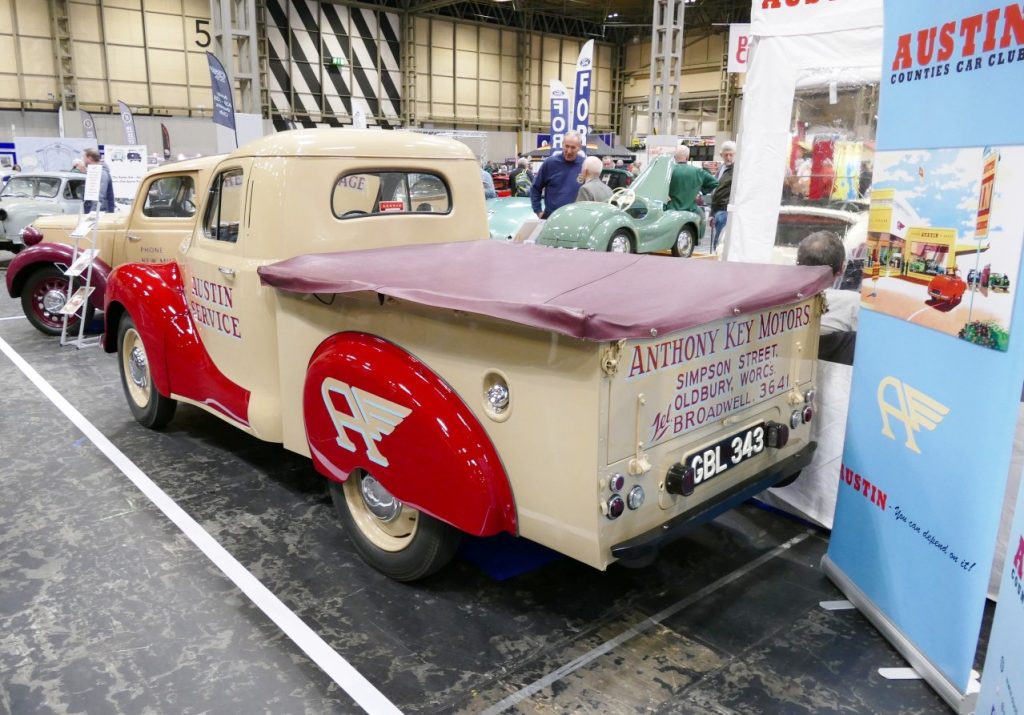
A 40 Sports 1950- 53
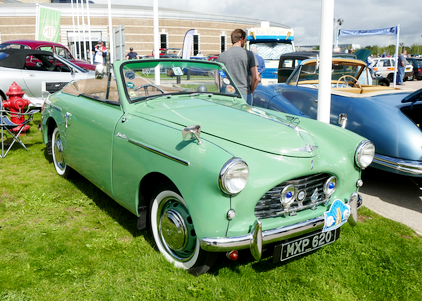
Two Austin A40 Sports cabriolets on a trailer being towed by a JenTug outside Jensen’s Carters Green factory
Austin Healey 100 to 3000 1952 – 67
The story of how Jensen obtained the contract to build the the Austin Healey bodies is one of the legends of the British Motor industry. There are two versions of that story, the romantic one goes like this: Leonard Lord, the CEO of Austin at the time, had asked Jensen to design a sports car as a follow up to the A40 Sports (a scaled down version of the 1950 Jensen Interceptor, designed by Eric Neale) which they were already supplying to Austin under contract. But Leonard Lord saw the Healey 100, designed by Healey employee, Gerry Coker, at the 1952 London Motor Show and decided to place the design contract with DMH.
The more practical story is broadly similar but has Leonard Lord setting up a competition between Healey, Jensen and Frazer Nash to design a sports car for Austin.
The first time Mr. Lord saw the Healey 100 was at the 1952 London Motor Show but it wasn’t by chance and Jensen was not able to produce its car in time. There is little knowledge of Frazer Nash’s design or if they even presented one but the Mille Miglia, (photo shown below) was produced around the same time and could easily have been presented by them.
The other contenders for the Austin Sports Car Contract –
Jensen –
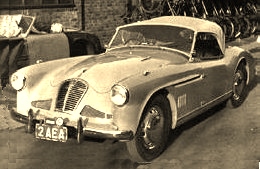
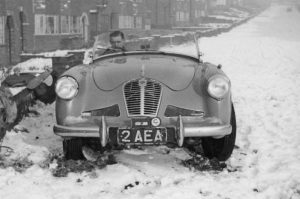
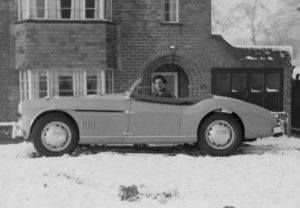

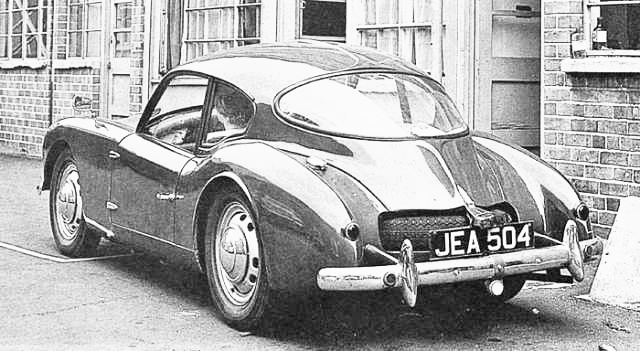
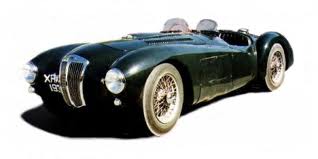
Update February 2020 – Originally, when I read that Frazer Nash could have been involved in the submission to Leonard Lord for the Austin Sportscar project I assumed that it was the Mille Miglia (above) that they had submitted. The reason I assumed that is because of the similarity, in profile, to the Healey 100 design. But recently I have been doing some research on a company called Peel Coachworks (full name – Robert Peel Sheet Metal Works). They made a body for FN’s Continental sports saloon. In reading about that car, on the Frazer Nash Archives website, I came across the Targa Florio model. The text which accompanies the photograph of that car reads –
“The ‘Targa Florio’ was built on the parallel-tube chassis developed in 1951 for the single-seaters and used Austin front hubs, rear axle and wheels. It featured a simpler, smoother body shape than the ‘Mille Miglia’ with a curved windscreen and made a comfortable touring car with a more spacious cockpit and boot, although the spare wheel was in all cases bar one housed in the boot. The third car built was fitted with an Austin A90 4-cylinder engine and displayed at the 1952 London Motor Show. It was however trumped by the cheaper Healey 100 which Austin adopted to make the Austin-Healey and so no more Austin-engined Nashes were produced.”
The fact that the FN Targa Florio, with its Austin A90 engine and other Austin components, was displayed at the 1952 Earls Court Motor Show, the same show at which the Healey 100 was first revealed, seems to support the idea that all three manufacturers, Healey, Jensen and Frazer Nash, had been asked to submit designs for an Austin Sportscar.
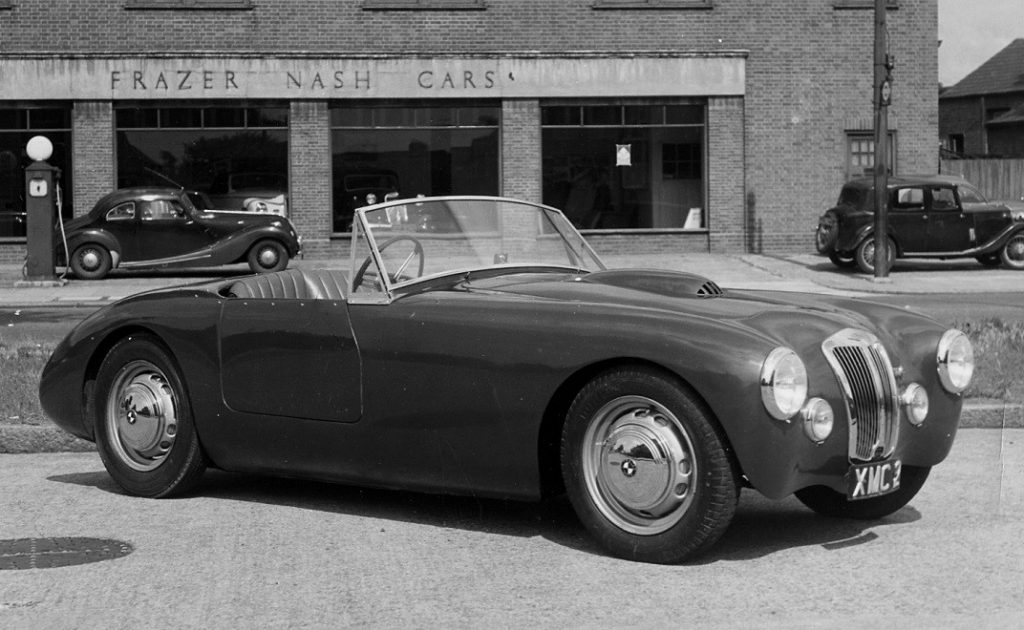
Originally Tickford was going to produce the production bodies but the Healey 100 created such an impact at the London Motor Show that it was soon realised that Tickford facilities, in Newport Pagnell, could not cope with the demand. So, the contract was given to Jensen, who would have been lobbying for it in any case. Jensen’s capabilities were well known to Austin via the A40 sports and Austin Somerset Pick-Up contracts.
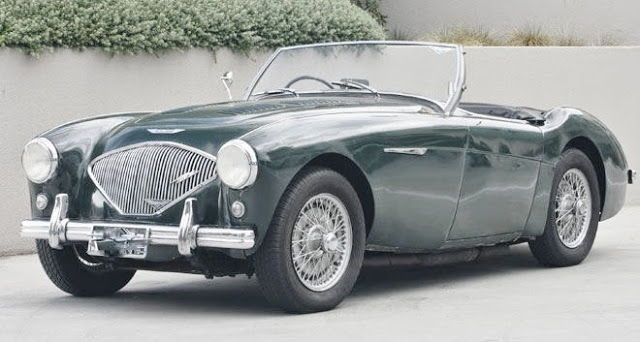
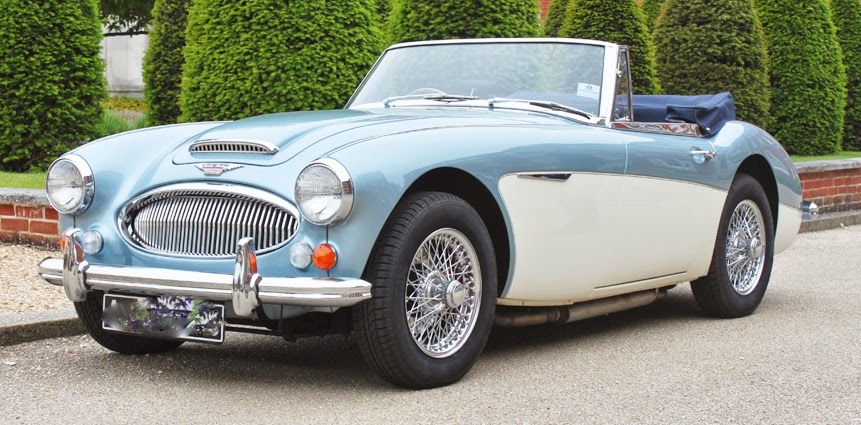
Volvo P1800 1961 – 63 (at Jensen)
Sunbeam Tiger 1964 – 67
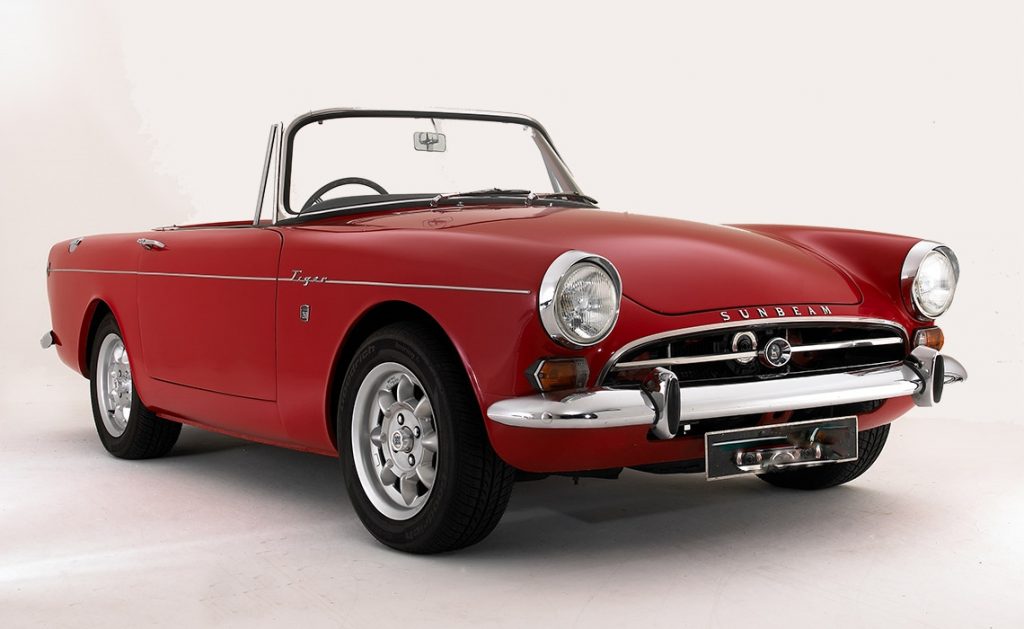
Another Rootes Project which did not come to fruition – The Hillman Imp based Asp
There was a good relationship between Rootes and Jensen because Jensen’s Chief Chassis Engineer, Kevin Beattie, was a former Rootes Group Pupil and employee. The purpose of the Rootes Group Pupilage scheme was to train the future senior managers of the company. Therefore many of the people, still working at Rootes, that Kevin would have known, would have been ‘movers and shakers’. This connection may have also influenced Rootes to give the Sunbeam Tiger contract to Jensen. At around the same time, mid-sixties, Rootes was considering expanding the versatile ‘Imp’ layout to include a sports car, aimed mainly at the lucrative U.S. market.
The Asp was the result of those discussions and again Jensen was asked to tender for the production of around 500 units per week.
If the car was going to be based on the Imp then it would have been logical to have used that car’s rear-engined layout and floor platform. But I am pretty sure that was not the case. I believe that the Asp did not have or was not planned to have a monocoque body shell, as the Imp had but instead had a separate perimeter frame chassis. I did see this car in the Jensen development department but only in a “look but don’t touch” kind of way.
I think that you may agree that it was a very attractive looking car (designed by Tim Fry, Bob Saward and Ron Wisdom) for its time, I certainly remember thinking so. I always wondered what happened to it and why Rootes did not put it into production. There are many reasons for this, not the least being that Rootes were economically strapped at the time and could only afford to back certainties. They were also talking to Chrysler about a possible take over and it has been suggested that Chrysler saw little future for the car in the American market.
A number of specialist manufacturers did produce Imp based sports cars and were quite successful with them. The most notable being the Clan Crusader built in Washington, County Durham, England and then as just ‘Clan’ in Newtownards, Northern Ireland.
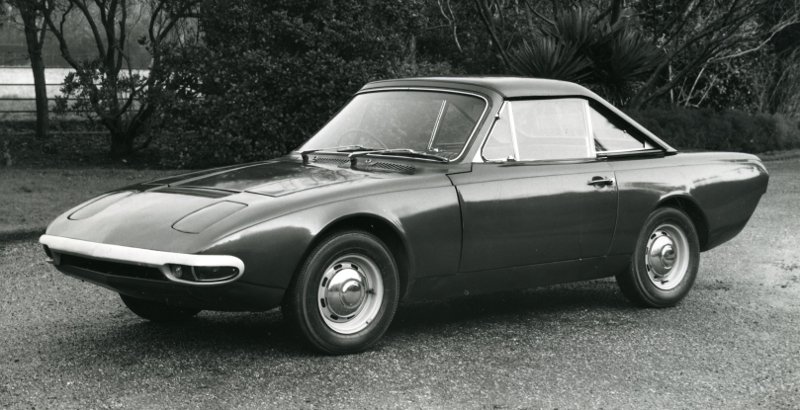
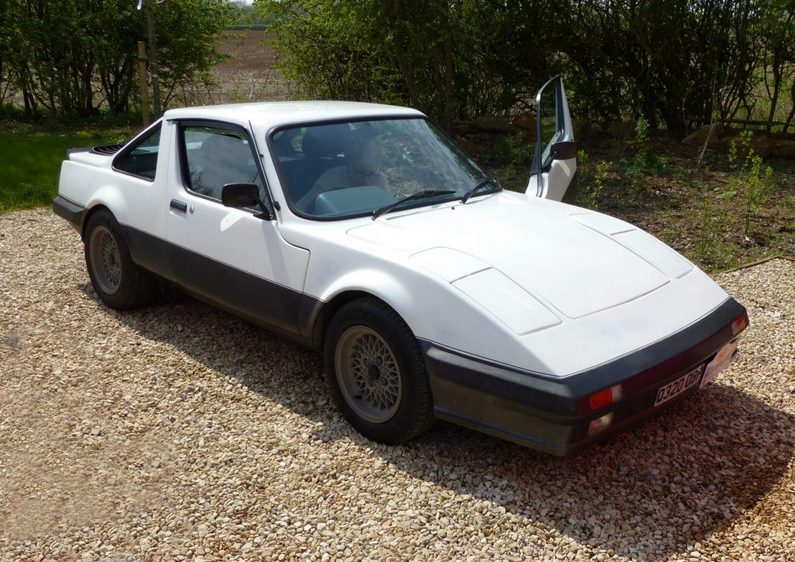
Jensen – Healey 1972 – 76 (not strictly a contract)
Nick
© carsceneinternational.com
